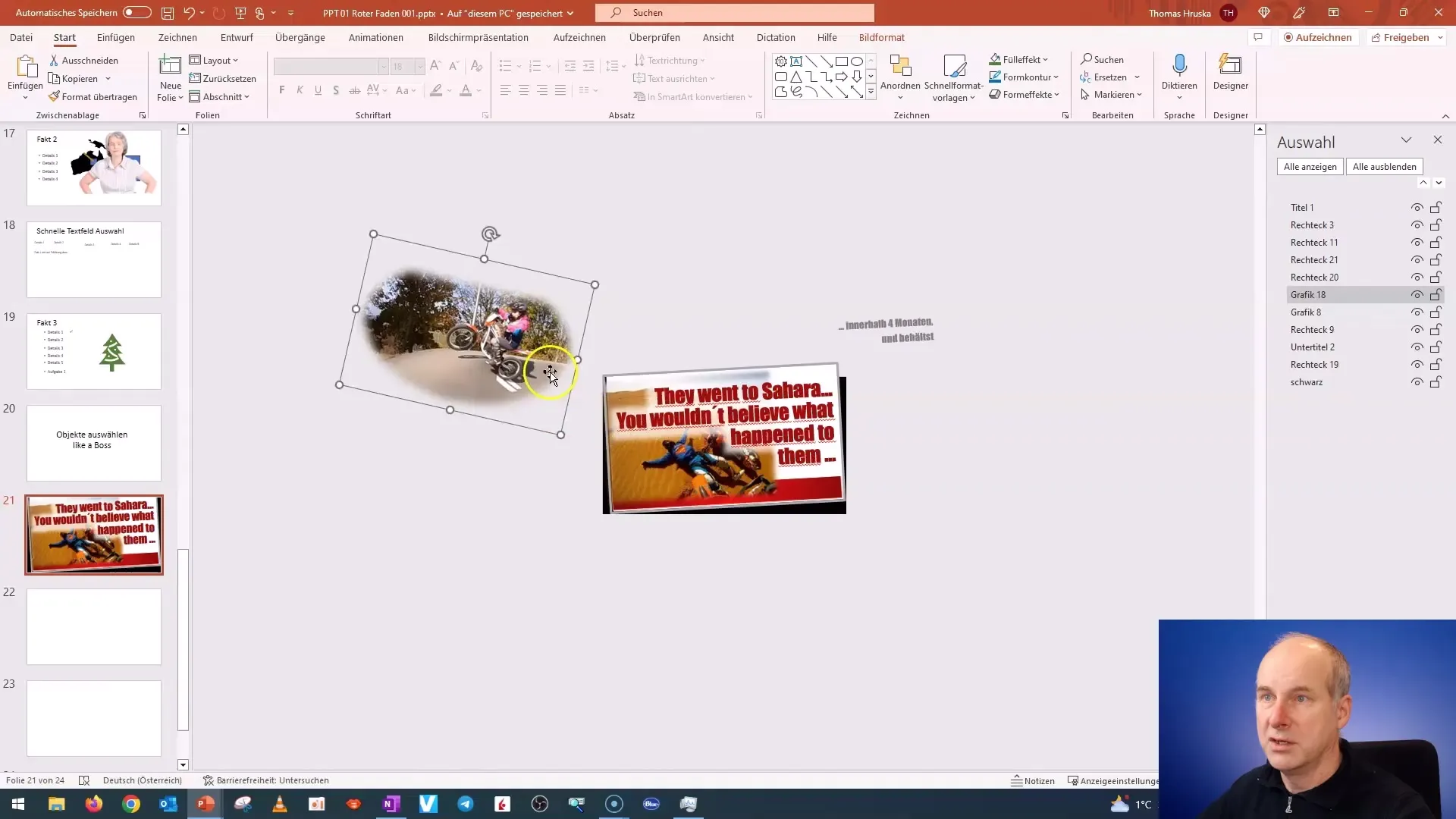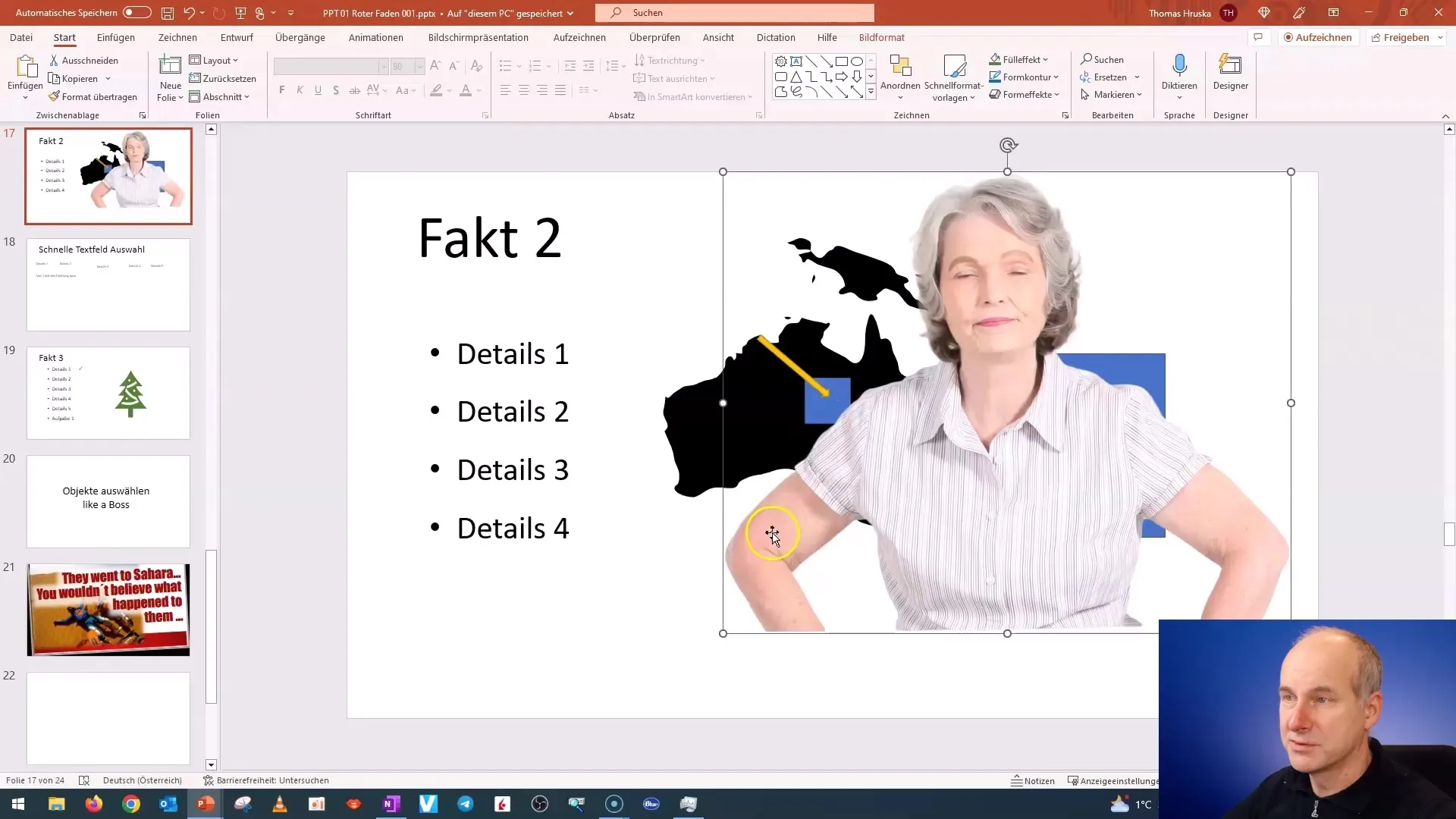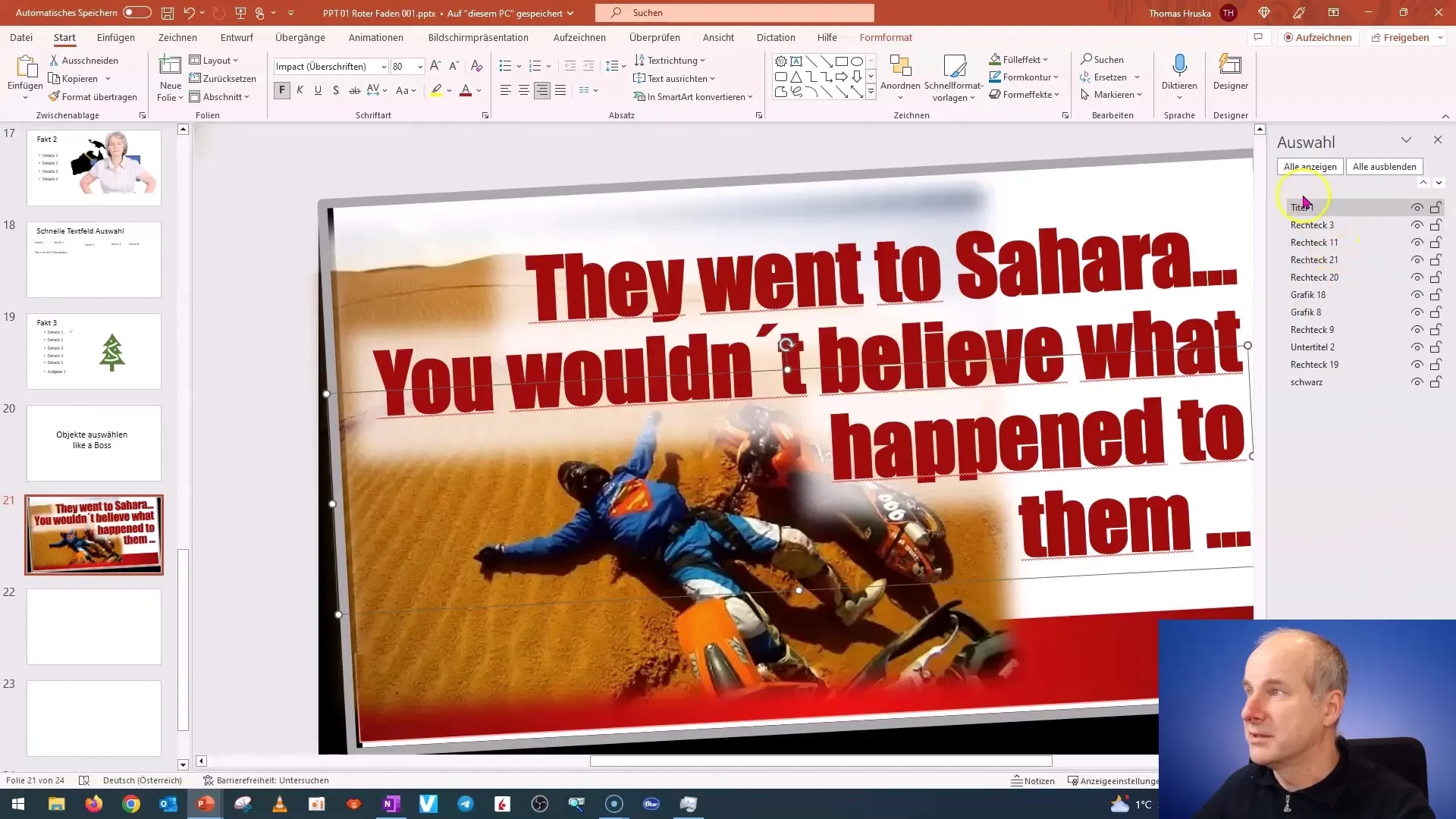Welcome to this detailed guide on selecting objects in PowerPoint. In today's digital world, it is important not only to know the basics of software but also to master the advanced features. In this tutorial, I will show you how to work with the selection pane in PowerPoint and effectively work with multiple overlapping objects. It can often be frustrating not to be able to select an object or to get lost in a tangle of graphics, text boxes, and shapes. But don't worry, here you will learn how to overcome all these problems and act like a pro.
Key Takeaways
Here are the key takeaways you will get from this tutorial:
- The selection pane is a powerful tool in PowerPoint that helps you efficiently manage objects.
- You can rename objects to increase clarity.
- Locking and unlocking objects allows you to prevent unintended changes.
- With the right application, you can control the order of objects and therefore select them more easily.
Step-by-Step Guide
To select objects in PowerPoint "like a boss," follow these steps:
1. Introduction to the Challenge
When creating engaging presentations in PowerPoint, you may have many objects layered on top of each other. This may lead to situations where you cannot select certain objects. In one example, we see a situation where a text box is not properly visible because it is in a cluttered layout.

2. Accessing the Selection Pane
To master this challenge, go to the "Arrange" menu and click on "Selection Pane." This area is largely unknown but extremely useful when it comes to increasing clarity and avoiding any confusion with many objects. Skillful handling of the selection pane can significantly enhance the enjoyment and efficiency of your work.

3. Viewing Objects in the Selection Pane
In the selection pane, you will see all the objects listed on your slide. Each object is represented by a meaningful word or description. Simply click on an object to highlight it. This way, you will immediately recognize where each object is located. It is useful for organizing large and complex presentations better.
4. Renaming Objects
To further improve clarity, there is the option to rename objects. This is helpful for quickly identifying specific elements. For example, you can name them "red frame" or "black rectangle," depending on your personal organization system.
5. Showing and Hiding Objects
Another useful feature in the selection pane is the ability to show or hide objects. When creating something complex, it can be advantageous to hide a specific element to see the overall picture better and understand how it looks. You can also show or hide graphics, texts, and shapes as needed.
6. Locking Objects
To ensure that you do not make unintended changes to important objects, you can lock them. Right-click on the desired object in the selection pane and choose "Lock." This is especially useful when working with background graphics that you do not want to accidentally move.

7. Arrangement Tools
For object arrangement, you can use the context menu to bring objects to the front or back. These functions are extremely valuable when you want to ensure that the right elements are visible and placed in front of others. You can simply select an object, then right-click on it, and choose the appropriate option.
8. Working Effectively with Multiple Layers
Note that objects in PowerPoint can be arranged in different layers. When objects are on top of each other, it can be a challenge to select the ones underneath. Use the selection pane to navigate easily between objects and find the desired elements. This will help you optimize your project and save time.

9. Summary of Selection Techniques
Now that you have covered the different techniques for selecting objects, you should be able to work efficiently with complex graphics. Experiment with these functions to see how they can enhance your PowerPoint experience.
Summary
With the knowledge from this tutorial, you should no longer have any problems selecting and managing objects in PowerPoint. Using the selection pane, renaming, showing and hiding, as well as locking and arranging objects are essential functions that can significantly increase your efficiency and creativity when creating presentations.
Frequently Asked Questions
What is the selection pane in PowerPoint?The selection pane displays all objects on the slide and allows for easier management.
How do I lock an object in PowerPoint?Right-click on the object in the selection pane and choose "Lock."
How can I control the visibility of objects?You can select objects in the selection pane and show or hide them as needed.
What can I do if I can't select an object?Use the selection pane to quickly find and select the desired object.
Could I rename objects?Yes, you can rename objects in the selection pane to improve clarity.


